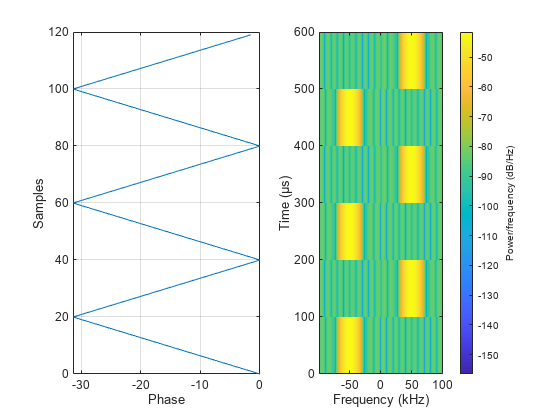comm.FSKModulator
Modulate using M-ary FSK method
Description
The comm.FSKModulator
System object™ modulates a signal using the M-ary frequency shift keying (M-FSK) method. The
output is a baseband representation of the modulated signal. For more information, see Algorithms.
To modulate a signal using frequency shift keying:
Create the
comm.FSKModulatorobject and set its properties.Call the object with arguments, as if it were a function.
To learn more about how System objects work, see What Are System Objects?
Creation
Syntax
Description
fskmodulator = comm.FSKModulator
fskmodulator = comm.FSKModulator(Name=Value)comm.FSKModulator(BitInput=true) that specifies
input values must be binary.
fskmodulator = comm.FSKModulator(M,freqSep,RS,Name=Value)ModulationOrder property set to
M, the FrequencySeparation
property set to freqSep, the SymbolRate property set to
RS, and optional name-value arguments.
Properties
Usage
Syntax
Description
Input Arguments
Output Arguments
Object Functions
To use an object function, specify the
System object as the first input argument. For
example, to release system resources of a System object named obj, use
this syntax:
release(obj)
Examples
More About
Algorithms
As described in Sklar [1], the general analytical expression for M-FSK modulation is
E is the symbol energy.
T is the symbol time duration.
ωi is the frequency term that has M discrete values.
M is the modulation order and specifies the number of waveforms.
ϕ is the phase offset.
References
[1] Sklar, Bernard. Digital Communications: Fundamentals and Applications. 2nd ed. Upper Saddle River, NJ: Prentice-Hall PTR, 2001.
Extended Capabilities
Version History
Introduced in R2012a
